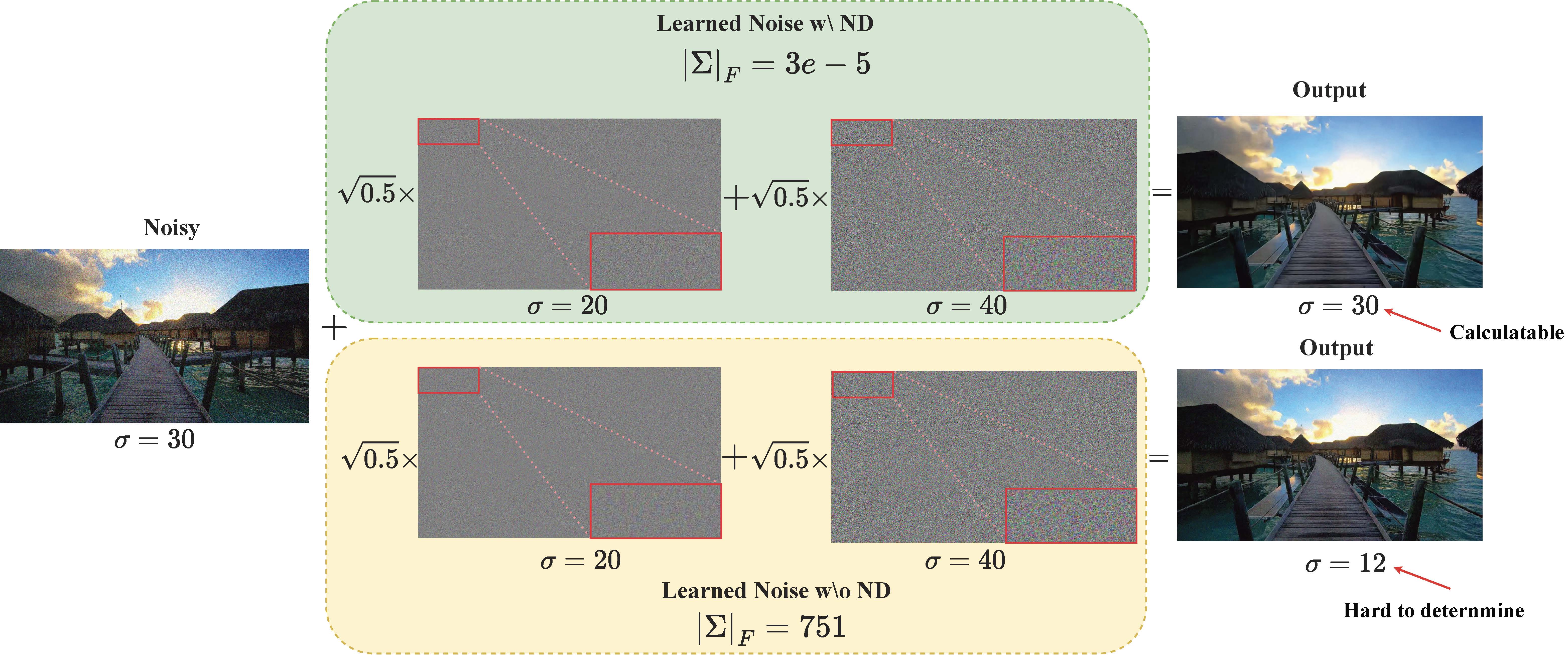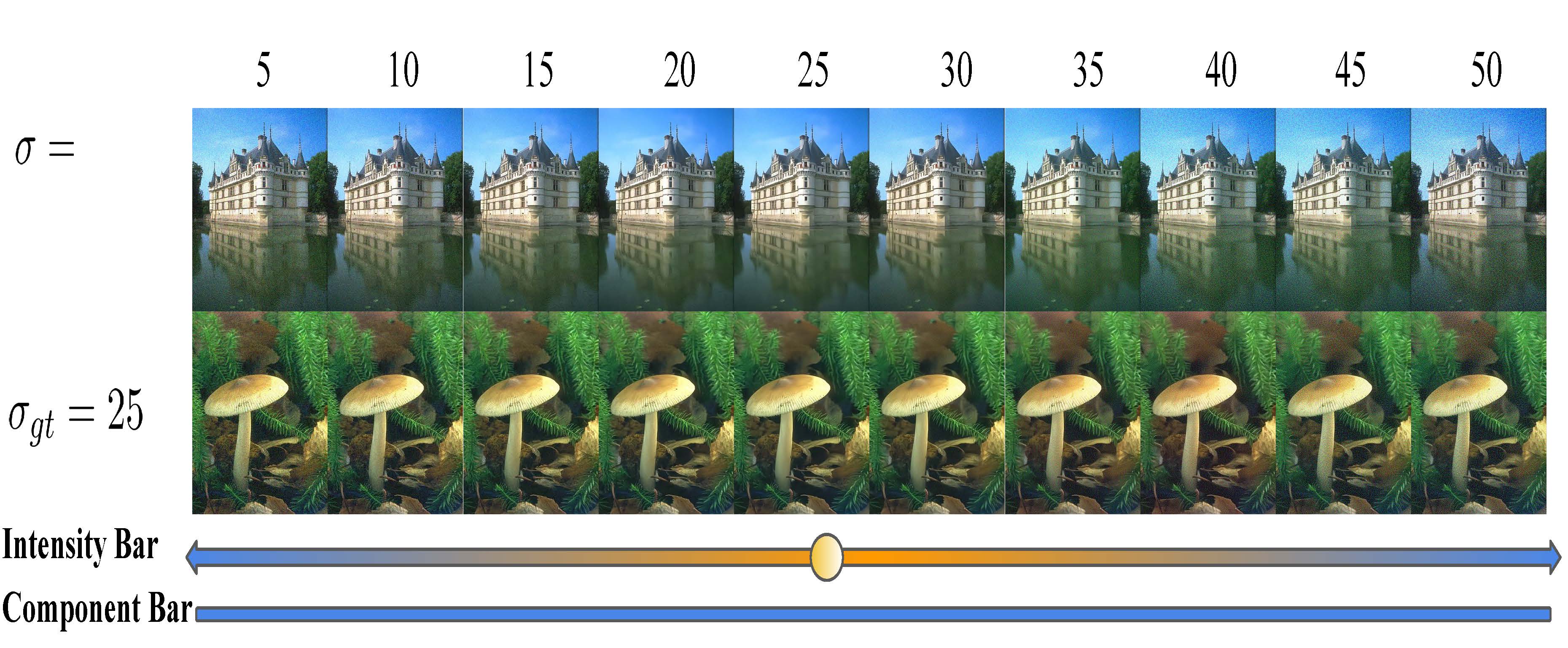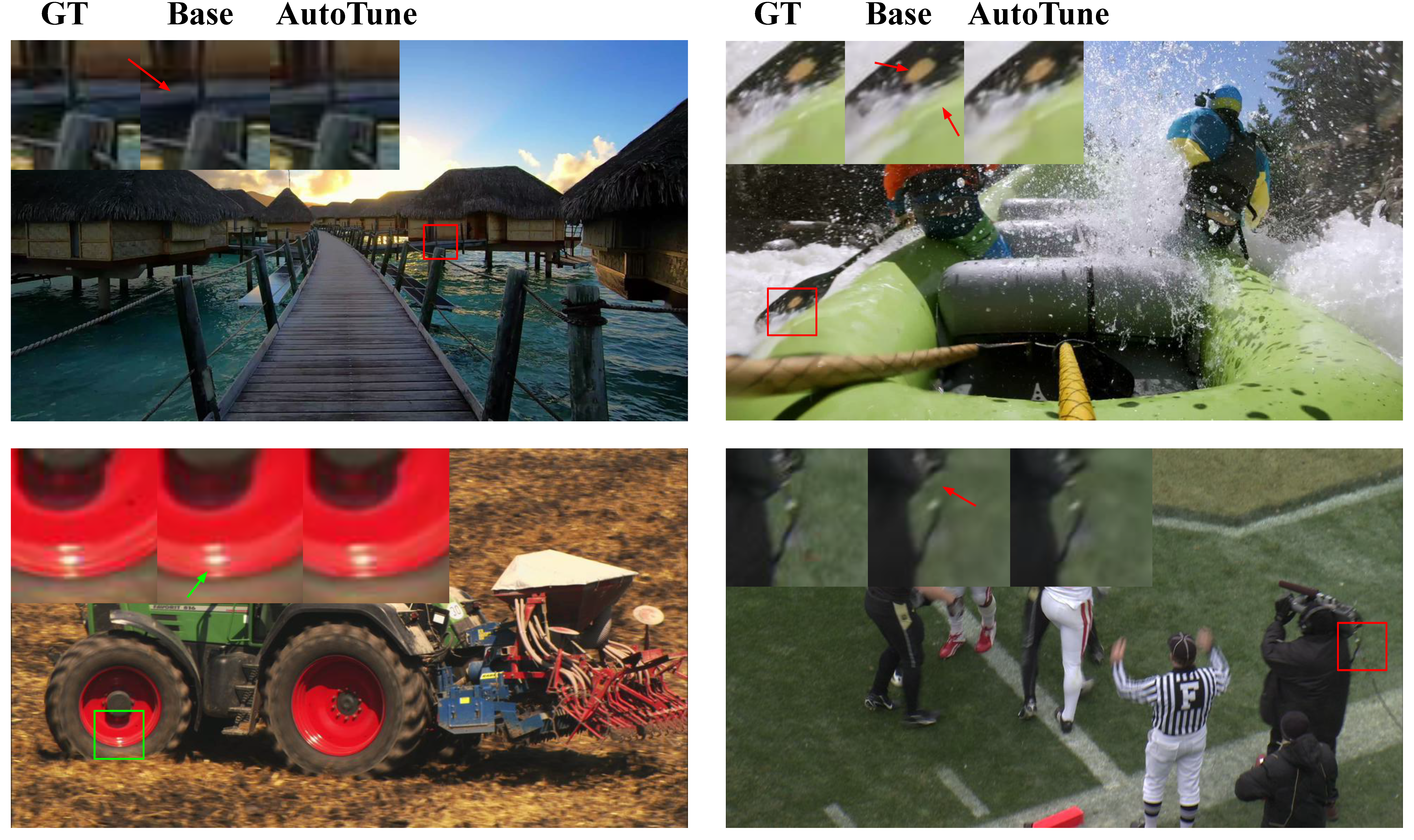Real-time Controllable Denoising for Image and Video
Zhaoyang Zhang, Yitong Jiang, Wenqi Shao, Xiaogang Wang, Ping Luo, Kaimo Lin, Jinwei Gu
Project page for paper "Real-time Controllable Denoising for Image and Video" published in CVPR 2023.
Demo Video
Abstract

Controllable image denoising aims to generate clean samples with human perceptual priors and balance sharpness and smoothness. In traditional filter-based denoising methods, it can be easily achieved by adjusting filtering strength. For NN (Neural Network)-based models, we usually need to perform network inference each time we want to adjust the final denoising strength, which makes it almost impossible for real-time user interaction. In this paper, we present Real-time Controllable Denoising (RCD), the first deep image and video denoising pipeline which provides fully controllable user interface to edit arbitrary denoising level in real-time with only one-time network inference. Unlike existing controllable denoising methods, our RCD does not require multiple denoisers and training stages. It replaces the last output layer (usually outputs a single noise map) of an existing CNN-based model with a lightweight module, which outputs multiple noise maps. A novel Noise Decorrelation process is proposed to enforce the orthogonality of the noise feature maps. As a result, we can facilitate arbitrary noise level control by noise map interpolation. This process is network-free and doesn't require network inference. The experiments show that our RCD can enable real-time editable image and video denoising for various existing heavy-weight models without sacrificing their original performance.
Method Pipeline

Editable Noises
| How noise decorrelation works for noise editting | How to control denoising results using RCD |
|---|---|
 |
 |
| The inclusion of the ND block results in a significant reduction in the covariance of learned noises, effectively driving it towards zero. This reduction enables us to calculate precise interpolated outcomes with the desired noise intensity. On the contrary, in the absence of the Noise Decorrelation block, the level of output noise cannot be assured. | Our AutoTune module is capable of producing top-notch outcomes by solely utilizing the reference control parameters. Additionally, users have the flexibility to enhance the results even further by manually adjusting the ${c_i}$ values around ${\bar{c_i}}$ , all while maintaining the same level of noise. |
Visulizations
Tuning Noise Intensity

Image Denoising (AutoTune)

Video Denoising (AutoTune)

Citation
If you find our paper useful for your research, please consider citing our work :blush: :
@InProceedings{Zhang_2023_CVPR,
author = {Zhang, Zhaoyang and Jiang, Yitong and Shao, Wenqi and Wang, Xiaogang and Luo, Ping and Lin, Kaimo and Gu, Jinwei},
title = {Real-Time Controllable Denoising for Image and Video},
booktitle = {Proceedings of the IEEE/CVF Conference on Computer Vision and Pattern Recognition (CVPR)},
month = {June},
year = {2023},
pages = {14028-14038}
}